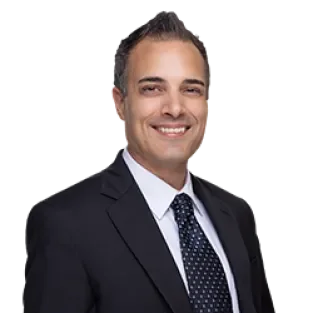ASAP
OSHA Wants to Revise its Worker Walkaround Representative Policy – Should Employers Be Concerned?
|
On August 29, 2023, the U.S. Occupational Safety and Health Administration (OSHA) released a proposed rule that would resurrect an Obama-era policy that allowed employees to designate third-party representatives to accompany OSHA inspectors on walkaround inspections of their employer’s workplace. OSHA says the proposed rule seeks to “aid OSHA’s workplace inspections by better enabling employees to select a representative of their choice to accompany the Compliance Safety and Health Officer (CSHO) during a physical workplace inspection.” Specifically, OSHA proposes to revise 29 CFR 1903.8(c) to clarify that (1) a representative authorized by employees may be an employee of the employer or a non-employee third party, and (2) employees may authorize a third-party representative reasonably necessary to conduct an effective and thorough physical inspection of the workplace by virtue of their knowledge, skills, or experience.
OSHA is seeking public comment on all aspects of its proposed rule, but in particular on why employees may wish to be represented by a third-party representative, and whether the proposed changes to 29 CFR 1903.8(c) are clear. OSHA is also soliciting feedback from stakeholders regarding the regulation’s “reasonably necessary” requirement. Based on planned formal publication in the Federal Register on August 30, 2023, public comments to OSHA’s Notice of Proposed Rule will be due by October 30, 2023.
History of OSHA’s Policy
The worker walkaround representative policy has its origins in a February 21, 2013 OSHA letter of interpretation authored by former OSHA Deputy Assistant Secretary Richard Fairfax. The letter addressed questions from a Health and Safety Specialist with the United Steelworkers of America in Pittsburgh, Pennsylvania: Whether workers at a worksite without a collective bargaining agreement may (1) designate a union or community organization representative to act as their “personal representative” for OSH Act purposes; and (2) designate a union or community organization representative to act on their behalf during a walkaround inspection.
OSHA answered “Yes” to the first question and cited the OSH Act, the OSHA regulations and the Field Operations Manual (FOM) in effect at that time as support for allowing non-employees to represent employee interests in enforcement-related matters. Such matters included filing complaints on behalf of an employee, requesting workplace inspections, participating in informal conferences to discuss issues raised by citations, contesting the abatement period in OSHA citations and participating in contest proceedings filed by an employer. OSHA relied upon the FOM to suggest that any person acting in a bona find representative capacity, including members of the clergy, social workers, spouses, other family members, government officials or nonprofit groups and organizations could serve in this role.1
Likewise, OSHA responded “Yes” to the second question, suggesting that the OSH Act authorizes a union or community representative to act on behalf of employees as a walkaround representative so long as the employees have authorized the individual to do so. OSHA cited 29 CFR § 1903.8 as support for allowing employee representatives to join OSHA inspections, although it conceded that the regulation acknowledges that most employee representatives will be employees of the employer being inspected. OSHA also conceded that 29 CFR § 1903.8(c) places clear limitations on this authority. The text of the standard reads:
The representative(s) authorized by employees shall be an employee(s) of the employer. However, if in the judgment of the Compliance Safety and Health Officer, good cause has been shown why accompaniment by a third party who is not an employee of the employer (such as an industrial hygienist or a safety engineer) is reasonably necessary to the conduct of an effective and thorough physical inspection of the workplace, such third party may accompany the Compliance Safety and Health Officer during the inspection.
OSHA explained that “reasonably necessary” means that the representative will make a “positive contribution to a thorough and effective inspection.” OSHA pointed out that such a contribution could be attributed to the representative’s experience and skill, or where non-English speaking workers want a representative present who is fluent in their own language as well as English.
The National Federation of Independent Businesses (NFIB) sued OSHA in federal district court claiming that the interpretation letter amounted to a legislative rule adopted without notice and comment and violated the Administrative Procedure Act of 1946. In order for OSHA to develop new or additional substantive obligations, the Administrative Procedure Act requires that the agency proceed through a formal rulemaking process, which affords an opportunity for notice and public comment.2 Although OSHA moved to dismiss the action, on February 3, 2017, the court found in part that NFIB had stated a claim upon which relief could be granted. On April 25, 2017, the Trump administration formally rescinded the guidance set forth in OSHA’s letter of interpretation, after which NFIB withdrew its lawsuit. At the same time, the Trump administration removed a section entitled “No Certified or Recognized Bargaining Agent” from the 2016 version of the FOM, which previously instructed inspectors that “workers without a certified or recognized bargaining agent may authorize third-party organizations and/or individuals to be their representatives during an inspection.”3
It is not surprising that OSHA is moving forward with a proposed rule this time around to legitimize its position on allowing third-party representatives to accompany employees during OSHA inspections. Indeed, OSHA’s letters of interpretation contain an important disclaimer clarifying that they “do not create new or additional requirements but rather explain these requirements and how they apply to particular circumstances.”
What Can Employers Do to Prepare?
Employers with employees who do not have a collective bargaining agreement – and particularly those employers with non-union worksites – should ensure that they have a written procedure in place that clearly instructs management on how to receive OSHA inspectors who wish to gain access to the jobsite. Of particular importance is checking (and verifying with the OSHA Area Office, if necessary) the credentials of each individual seeking to participate in the walkaround inspection, as well as gaining a clear understanding from the inspector regarding the agency’s asserted authority for conducting the walkaround inspection. If one or more of the individuals seeking entry does not hold a valid OSHA credential, then we recommend – prior to consenting to that individual’s participation – seeking clarification from the inspector regarding the third-party individual’s purpose in joining the walkaround as it relates to the inspection. OSHA’s proposed 29 CFR § 1903.8(c) would continue to require a showing of “good cause” that a third party’s participation is “reasonably necessary to the conduct of an effective and thorough physical inspection of the workplace.”
If it is unclear whether a third party has a legitimate purpose for participating in the walkaround inspection, then assuming OSHA otherwise has authority to conduct the inspection, we recommend allowing only the credentialed OSHA inspector access to the jobsite and insisting upon a warrant before permitting entry of the third-party participant. This approach permits the agency to continue with its inspection while preserving the employer’s right to demand that a third party’s participation comply with 29 CFR § 1903.8. Littler will continue to monitor the agency’s progress on this rulemaking.



